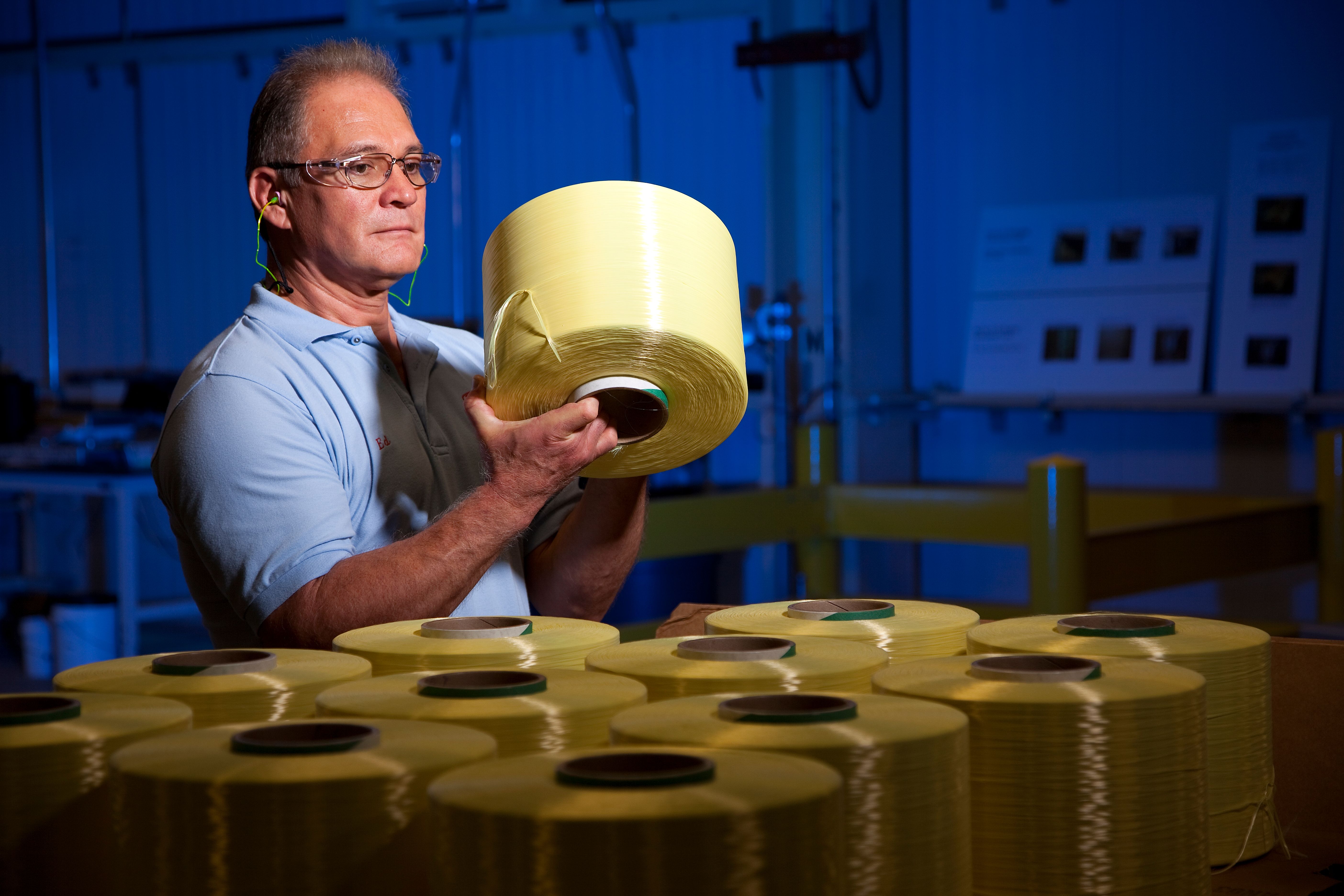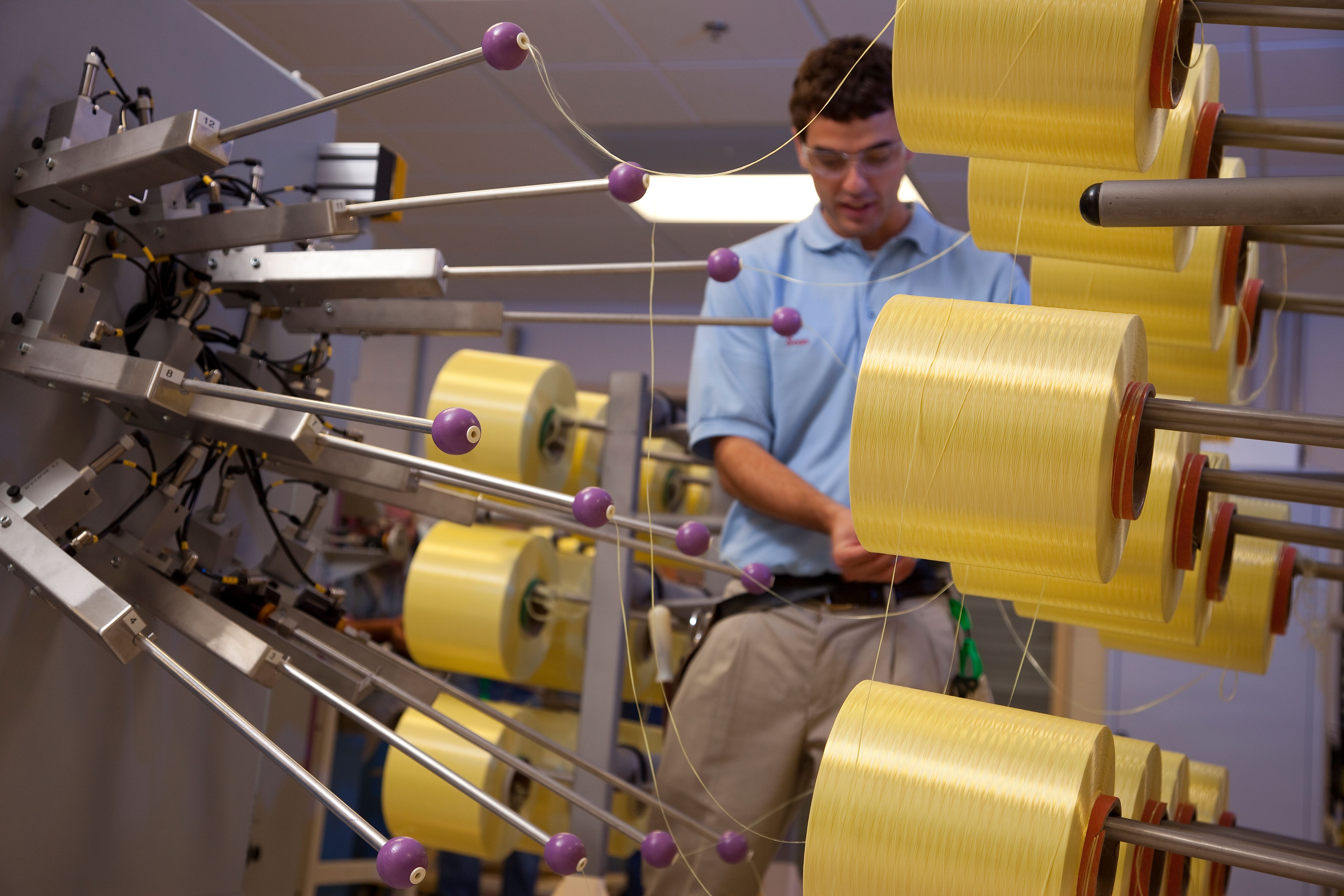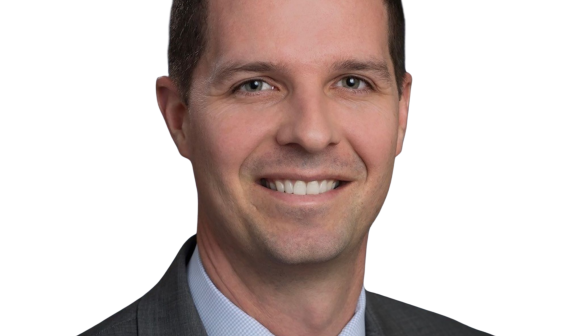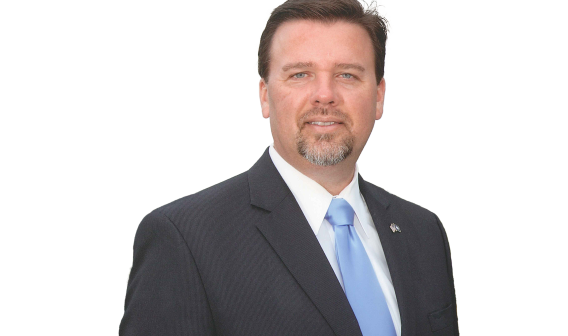The Future of Manufacturing in America
DuPont
DuPont has operated its Spruance plant in Chesterfield County since 1929. For over six decades, Spruance has been a key site in the development of new fibers and resins, continuing to adapt to DuPont’s changing needs. Materials produced at the site include DuPont™ Tyvek®, Nomex®, Kevlar®, and Zytel®.
Daryl Roberts is senior vice president and chief operations & engineering officer at DuPont. In this role, Roberts oversees global operations, including engineering, operational excellence and environment, and health and safety.
Virginia Economic Review: When you look at your industry, what do you see as significant manufacturing trends over the next five to 10 years in the U.S., and how are things changing?
Daryl Roberts: I would say we’re finding that as manufacturing has become more decentralized, sites have become smaller. I think if you go back 10 or 20 years, you would find larger manufacturing sites that were run by one company.
Companies are now nimble. Being quick to market and being focused is much more important than being large. I think you’re finding a lot of companies that are focused on what their core technologies and businesses are, whereas you may have found 10 or 20 years ago that companies acquired in multiple segments. They ran units that may not have been part of their core businesses.
I would also say people are going where there’s low-cost energy, and that’s clearly helped the U.S. over the course of the last five to 10 years. That’s still the case as we look forward, but I’ll say people are trying to identify locations, and even spending money to move to locations, where they think they’ll have a long-term variable cost advantage normally driven by the cost of energy.
VER: Are we still seeing a good bit of automation happening?
Roberts: Without any question. I think that’s going to be one of the drivers of what we call the move toward Industry 4.0, which is, how do we take the digital footprint we’ve seen in other industries and drive it into the industrial arena?
VER: Are there other things we might want to touch on as we think about the future of manufacturing related to Industry 4.0?
Roberts: I think a couple of things are key. One, Wi-Fi clearly is commonplace in the U.S. right now. Not so much in the industrial space, but as we have smarter instruments in the field, in the use of what we call “big data” in analytics, I think those things are coming into the industrial space. So, for a lot of sites, first, you’ve got to have the basic infrastructure, which means, “How do I do Wi-Fi?” And in this age, “How do I do it safely so my infrastructure stays secure?”
And then, how do we analyze it with the same big data-type technology we see being used for customer-focused data and take that to drive increased productivity at the site?
VER: And when you say Wi-Fi enabled equipment, to some extent, you’re talking about the “Internet of Things,” right?
Roberts: I would call that the “Internet of Things.” The things you’re seeing commercials about doing in your house with your thermostat and your refrigerator. You can do the same thing to understand when a pump may be going bad. You might have a tablet in the field that a maintenance mechanic is using. In the past, if he found something was broken, he may have had to travel to a storeroom to see what spare parts he had. Now that iPad can connect to that piece of equipment and tell that mechanic how it’s working and maybe what needs maintenance. He can press another button and see what type of spare parts he has in his storeroom without ever having to leave the work site.
So, when you can do those types of things, turnarounds become quicker, maintenance becomes more effective, and productivity goes up.
VER: What do you think states and regions interested in supporting current manufacturers, as well as attracting future manufacturing investments, can do?
Roberts: I’d say there are two or three things. One, energy drives so much of the chemical and material space, where we play in the specialty material space. But making sure that the grid is stable and reliable, that you’re efficiently incorporating renewable sources of energy, and especially that you’re competitive with your neighboring environment and neighboring states to be able to attract industry coming in.
Second, I would say, is access to talent. For me, that means a number of things. It means having an infrastructure where, from early elementary on, we’re developing people who use technology. So, focus on STEM education at the high school level. Access to operators, maintenance mechanics, and other technicians who have been through some type of trade schooling is really critical. Access to a skilled workforce is one of the barriers to growth that I think we’re all seeing across the country.
Also, if you think about those new graduates coming out today, having environments that people, quite frankly, want to live in. We want employees who want to come to a site and stay. For that reason, they need to be in a community where they feel like it’s advantageous for the type of living they desire.
VER: When we talk to manufacturers, they talk about the skills gap, and the types of occupations they most struggle to fill are skilled trades. Is that your perspective?
Roberts: My perspective is a little different. The other area is having the right level of skills for incoming operators to the system. Most of the control rooms we have now are very intricate and highly detailed. We’re finding it takes us a long time to train new operators. It’s just as important for operators to come in with some exposure to technology as it is for our maintenance and skilled people.
VER: What makes Virginia a good location for DuPont?
Roberts: We’re coming up on 90 years at that site in Chesterfield. It’s one of our largest sites in the world. We have some of our existing, most critical, businesses and storied brands operating out of that site, like Tyvek, Nomex, and Kevlar.
We’ve always found that site to be one where we’ve been able to be part of the community. We’ve had workers there who really have focused on their own development in representing the company, even outside the plant. The Richmond environment has been one with a history in manufacturing, and we’ve been able to attract and keep really good long-term talent, which has been the key to our success at that site.






